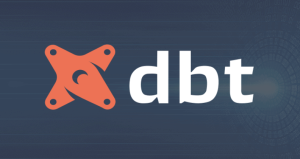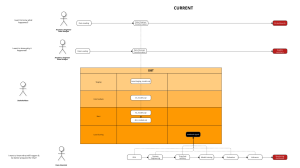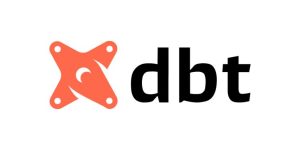In this post-pandemic digital era, where data is the key driver of business growth, having a traditional data strategy can put companies behind the curve. Enterprises are currently dealing with a massive amount of real-time streaming data, including management tasks such as database provisioning, patching, configuration, or backups.
Alongside the rising concern of data privacy, businesses need to connect their data lake, data warehouse, and all of the purpose-built data stores into a coherent system that is secure and well-governed. And that’s where modern data strategy provides the right mix of data lakes and purpose-built data stores.
A modern data strategy lets businesses break down data silos, empower their teams to run analytics and machine learning, and manage data with the proper security and data governance controls.

That said, creating an effective data strategy is no small task — it requires building a scalable and robust data infrastructure and creating a data-driven mindset in the organization. The process starts with moving data and workloads to the cloud, managing databases, building data-driven apps, analyzing data, and starting innovation with AI and ML.
Here are 5 key components for a success data strategy with a modern data stack:
1. Data
This is the most fundamental component, of course. But all the advice that follows will be of no help if your data isn’t safely stored and secured, well maintained and ready for use. The strategic value of your data has to be built on a solid base of enterprise data management. That includes integrating and processing your data, validating its quality, governing its use and auditing the processes that affect it.
Once these basics are in place, I always recommend an enterprise data catalog as a critical component of a data strategy. You can’t strategize around data if you don’t know what data you have. Data catalog tools are particularly useful for making data available to business users with detailed and descriptive metadata. Sometimes, too, IT managers want to map their systems — to know what data they have and where it resides. The IT team can create their own simplified data catalog for such needs.
This may sound basic, but it’s where you need to start. Besides this, breaking data silos to unify your organization and accelerate insights are the real important factors to a successful modern data strategy.
2. Tools
We’ve already mentioned data catalogs as one strategic tool. By necessity, they’re provisioned by IT and data management teams, who know how to work with the various features in data catalog software and how to set up and deploy them. We can make a useful distinction between tools provisioned in this way by IT and tools adopted by end users. Both have an important role to play in a data strategy, complementing rather than contradicting each other.
Data management tools are almost always the domain of IT. There are some lightweight data quality and data integration tools designed for business users, but data management remains largely a behind-the-scenes function.
IT often also deploys the BI tools used to create data visualizations, dashboards and reports. But data and business analysts may have their own preferences and choose different tools. That can work well so long as we put controls in place to govern data access and usage. Likewise, data scientists may feel most comfortable using tools they already mastered or that support certain analytics methodologies.
At one time, most IT teams tried to prevent the use of unsanctioned, non-standard tools. Now, just like we’ve adapted to bring your own device, analytics specialists commonly bring their own favored applications. A good data strategy embraces that diversity but with sensible limits. In this case, we can ask another question: What tools are appropriate to use? We’re probably happily enabling a data analyst to use a self-service BI application to build some dashboards. We may worry more if someone wants to build their own data warehouse when that is beyond the scope of their skills and authority.
3. Analytics techniques
Just as we use various analytics tools depending on our needs, we also employ a variety of analytics techniques. Data visualization is a common example. We may also find uses for predictive analytics, text analytics, sentiment analysis and cluster analysis, to name a few advanced analytics techniques. They can be powerful and useful but need careful oversight. Without it, we may fall foul of data governance and privacy laws.
Predictive analytics, for example, may show business value in optimizing equipment maintenance cycles. That’s an uncontroversial use. But predictive techniques could also be used to help automate hiring or manage marketing promotions. In those cases, employees and consumers may have concerns about the reliability, fairness or openness of the process.
A data strategy has to recognize that governing only data and tools may not suffice. We need to understand — and train people to understand — that not all analytics techniques are neutral. Some use cases, especially ones that involve personally identifiable information, won’t be justified by their business ends.
4. Collaboration
In modern businesses, the use of data is typically more collaborative than in the past. Increased data literacy and easier-to-use tools mean more people can take part in analytics, as well as technical fields like data preparation and data quality.
Even closely controlled processes, such as data governance and the development of master data definitions, can be crowdsourced. For example, doing so can ensure that product names, error codes and managed processes reflect the reality on the shop floor in a manufacturing company. Collaboration on master data can also avoid that most frustrating customer service response: “There’s no code for that.”
Collaborative tools are also being used more, from file sharing to enterprise chat, messaging and video conferencing. Human beings are compulsive collaborators. We share, discuss and debate with others constantly. If you don’t prepare for collaboration in planning a data strategy, it will happen anyway — unplanned.

Consider the role of data and analytics in your organization’s business decisions and look for processes that involve engagement within and beyond teams. Use that insight to support the ability to share and comment on dashboards, reports and data visualizations.
For example, some BI and analytics tools enable multiple users to annotate visualizations. Increasingly, they also integrate with chat and messaging apps. Even simple file sharing can be effective, especially when supported by enterprise-class scalability and security features.
5. Documentation and auditing
In describing these data strategy components, I’ve emphasized the need to balance IT control and the freedom of end-users to do self-service when appropriate.
To find this balance, our strategic goals must be well documented. Successful data strategies are built on the ability to answer four questions about any element of the plan and any resource — data, tools, etc. — it incorporates.
- What is appropriate?
- What is approved?
- What is the purpose?
- What is the governance policy?
With good documentation of both the data strategy and the underlying data architecture, we can answer these questions in advance of any new project or initiative. We should also be able to look back at any project and answer them retrospectively. By doing so, we put ourselves in a good position to audit how the data strategy is working. It can also help us assess compliance with data governance policies.
Data team plays important roles in the project success
The two most important elements of your data strategy are the bookends of this list: data and people. Organizations increasingly look for data literacy and at least some analytics skills in new business hires. Almost every business school now teaches basic data analytics.
Data scientists are in high demand, too. In the years to come, the market likely will oversupply us with qualified ones — every data science course in the country is oversubscribed. Think about DaaS as a solutions for saving the needs to hire and recruit a data team.
 Data team for hire (DaaS) is a new trend with various benefits
Data team for hire (DaaS) is a new trend with various benefits
You should also think carefully about IT and data management in your staffing and hiring. With so much technology running in the cloud and systems more robust than ever, it’s tempting to think IT merely has to keep the lights on. It’s not true. High availability, disaster recovery, meeting service-level agreements, supporting new business requirements and regulatory demands: That all falls into IT’s domain.
Data architects, data integration developers, data engineers, database administrators and other data management professionals also have key roles to play in meeting business needs. An IT staff that is savvy about the business is a great strategic advantage. It needs recognition and leadership support as much as any other role.
How to implement an effective data strategy
These five key components aren’t a complete guide to developing a data strategy. You also have to consider some broader concerns: budgets, competition, innovation, marketing plans, staffing policies and legal frameworks, to mention a few.
But you can apply this thinking broadly. For example, your staffing plan could include guidelines for making better use of data and analytics based on strategic priorities. Product innovation is increasingly driven by data on customer feedback, user behavior and market trends.
Implementing a data strategy requires you to understand your entire organization’s strategic goals. From there, break down the role of data and how it will be managed and used, then apply that consistently in production, finance, marketing, HR and other departments. The result will be a data strategy that is workable and flexible for ever-changing business pressures and needs.

Meet one of our analytics experts and build a modern data strategy aligns with your business goals.
- Joon Solutions Achieves the Data Analytics Partner Specialization in Google Cloud Partner Advantage Program - May 27, 2022
- Top 5 Digital Transformation Trends in 2021 and Beyond - September 21, 2021
- 6 Biggest Data Strategy Mistakes Every Company Must Avoid - September 13, 2021



